- Researchers recently completed the first leopard study in Wilpattu National Park after its closure during the Sri Lankan Civil War.
- Camera traps and scat analysis are helping biologists learn more about the ecology, diet and distribution of leopards across Sri Lanka.
- Survey results show that the leopard population appears robust within the core of Wilpattu National Park, but further research in other parts of the country is required to better understand this endangered subspecies.
A leopard researcher walks calmly along a trail to set up a camera trap inside Sri Lanka’s Wilpattu National Park. She is wary of running into an elephant or a sloth bear, but she knows that the dangers of the jungle are far less severe than the landmines that once lay beneath the forest floor.
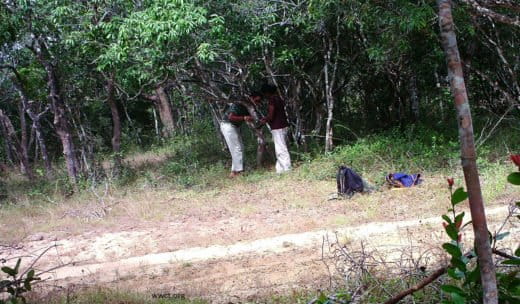
Wilpattu is Sri Lanka’s largest national park and was known historically as the island’s premier wildlife viewing destination. However, security concerns forced the park to close in 1988, five years after the outbreak of a civil war between the Sri Lankan government and the Liberation Tigers of Tamil Eelam (LTTE) militant group. In 2010, a year after the war’s conclusion, Wilpattu National Park reopened, enabling the Wilderness & Wildlife Conservation Trust (WWCT) to complete the first leopard study in the area since one by the Smithsonian Institution in the early 1970s.
WildTech interviewed Anjali Watson, Ecologist & Managing Trustee at WWCT, to find out more about their recent study in Wilpattu, the research limitations of the civil war and the importance of camera trap technology in their leopard research.
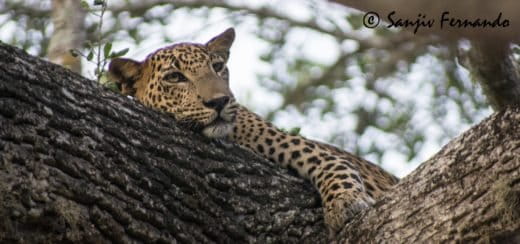
War and wildlife
The Sri Lankan Leopard (Panthera pardus kotiya) is the country’s apex predator and is endemic to the island. This subspecies is classified as endangered, with population estimates suggesting that only 750 to 900 adult leopards remain. In the early 2000s, Anjali Watson and her zoologist husband Andrew Kittle embarked on a mission to better understand the ecology and distribution of this species. They founded WWCT, identified protected areas that needed to be surveyed and gradually commenced fieldwork in those locations. Wilpattu National Park was a high priority on their list, but political instability during the Sri Lankan Civil War made the region inaccessible.
Sri Lanka’s forested areas in the north provided an ideal environment for the LTTE’s guerilla warfare tactics. “Wilpattu’s jungles were ideal for hideouts and movement corridors to access the west of the island,” said Watson.
During the ceasefire in 2002, Watson and her team, accompanied by the Sri Lankan Army, made a field visit to assess forest and wildlife conditions but were confined to a couple of main roads due to fears that landmines were present elsewhere in the park. They conducted an additional recce visit when the park temporarily reopened in 2004, but security concerns and lack of access hindered more extensive research.
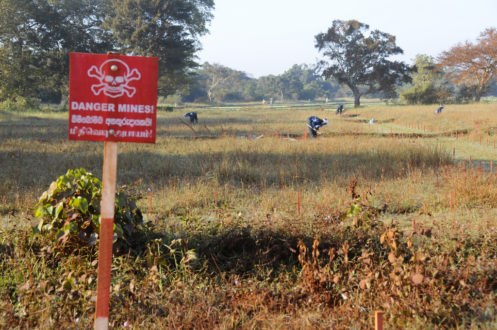
Although the region experienced conflict for over two decades, it is difficult to evaluate how the war affected Wilpattu National Park. Watson acknowledged that bush meat hunting was common due to limited food supplies. “We know that wild meat was part of the diet on both sides, but to what extent, we have no idea,” she noted.
Regular visitors to the park prior to its closure believe that deer herds are smaller than they used to be, but the absence of a baseline study on prey populations makes it impossible to draw definitive conclusions. Despite supposed declines in ungulate populations within the park, Watson suggests that the conflict may have actually helped preserve biodiversity outside of protected areas. “During the war, development did not occur, and people moved out of the area, thus allowing forested areas to remain intact,” she said.

Post-war research
When the park reopened, Watson and Kittle took full advantage of it. Funded by a Rufford Small Grant and Cerza Conservation, they soon developed a research methodology for Wilpattu similar to what they had done in other parts of the country. At each study site, the WWCT team conducts a closed population survey and prey transects, using camera traps and scat analysis to determine leopard density, resident populations, and prey base, selection and preference.
They deployed remote cameras in closed population surveys in order to determine leopard density and prey density. Watson said they used camera trapping because “it is the best way to estimate population density of elusive carnivores, it is fairly easy to set up and it has become the equipment of choice for carnivore researchers in Asia after it was pioneered and refined by Dr. Ullas Karanth.” She noted that collaring was less prevalent in Asia until recently, so camera traps have been used much more extensively in this region than in other parts of the world.
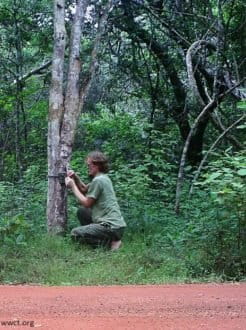
Camera traps: Helping to spot the spots
Watson and Kittle have worked with camera traps for over 15 years and have seen the technology evolve tremendously within that time. They started off using TrailMasters, film-based camera traps that she said are “high quality but expensive and difficult to set up in the field, as they required wires connecting the various components.”
Today’s digital camera traps are much cheaper, easier to use and do not need to be as closely monitored due to their large storage capacity. “While they are prone to glitches, newer camera trap models have improved battery life and weather resistance and enable you to get results faster and cover larger areas [when compared to film cameras],” Watson said.
WWCT deploys digital camera traps with flashes that use an incandescent bulb at night, rather than units with infrared flashes that tend to produce blurry photos if the animal is moving. Crisp, clear images are essential to this study, as researchers identify individual leopards based on their spot patterns. Currently, the WWCT team identifies leopards using the naked eye because existing identification software still has a high error factor.
“Improving this software and fine-tuning it to minimize the error factor will help scientists produce results quicker, especially when working with large datasets,” Watson said.
She added that camera traps are advantageous, as they capture images 24 hours a day, are non-disruptive to the target species and can be set up in areas that are inaccessible by vehicle.
“When used in combination with other field methods, camera traps can give you a lot of answers,” she stated. She acknowledged, however, that camera traps can offer only limited information about animals’ movement patterns, which tracking collars can provide readily.

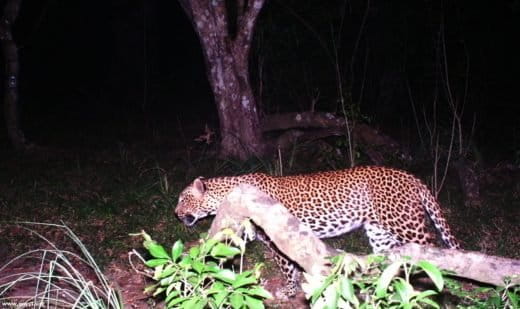
Survey suggests robust leopard population
Overall, the team was happy with the results from their survey in Wilpattu. Over a four-month period (836 combined active camera days), they identified 49 individual leopards in an area of 500 sq. km. Using a spatially explicit capture-recapture analysis, they determined that the study area has a population density slightly higher than Horton Plains National Park and slightly lower than Yala National Park’s Block 1, which WWCT has documented as having one of the highest leopard densities in the world[i]. Watson also highlighted that “Prey densities appeared considerably lower than Yala National Park, which is consistent with the theory that carnivore densities respond to prey densities.”

WWCT’s research in Wilpattu will become a baseline study, given the lack of previous field studies. “This is basic data in a sense, but because of the war, this is new data for us as a country. During the war, GPS units were not widely available, and the satellites were closed over Sri Lanka,” Watson explained.
But the future is bright. “Right now, the satellites are open and we have GIS layers and maps that you could not get earlier,” she said. These advances enable the researchers to more easily address questions regarding resource and habitat selection and how they link to potential movement corridors.
Future Plans
The Wilpattu study is part of WWCT’s broader program to understand leopard ecology and distribution across the island. Over the last 15 years, the team has confirmed that leopards live, maintain resident populations and breed outside of protected areas, and its findings suggest that leopard diets vary according to their habitat.
Watson and Kittle aim to establish a comprehensive habitat use plan for the Sri Lankan leopard by 2020, consisting of a complete distribution map and an assessment of its habitat selection across the nation. They hope that by understanding leopard distribution and movement throughout the island, they can contribute to a larger land use plan for the country that identifies priority areas for protection, reforestation and development where necessary.
[i] Kittle et al. (2016) “The ecology and behaviour of a protected area leopard (Panthera pardus kotiya) population”. Tropical Ecology Issue 57 Vol 5 (in press).
